For people who want to improve their garden, whether somebody new to gardening or an expert, there will always be places that are awkward and probably even a little unsightly, that can prove to be a challenge. Whether it is that spot that gets limited sunshine or does not at all or whatever tricky place that makes the garden feel “incomplete,” there are thankfully still some choices for which plants to place there. A gardener is never without options, and the following is a list of some of the best shade-loving plants that grow in Australia:

15 of The Best Shade Loving Plants That Grow In Australia
- Plectranthus or Mona Lavender
- Sarcococca confusa or Sweet Box, Christmas Box
- Daphne odora or Winter Daphne
- Lamium maculatum or Dead Nettle
- Tiarella cordifolia or Foamflower
- Pulmonaria or Lungwort
- Astilbe (Younique Carmine, Rise and Shine)
- The South African Clivia Miniata or Fire Lily
- Hydrangea quercifolia or Oakleaf Hydrangea
- Helleborus orientalis or Winter Roses
- Plectranthus argentatus or Silver Spurflower
- Arthropodium cirratum or New Zealand Rock Lily
- Ophiopogon jaburan ‘Vittatus’ or Giant Mondo Grass, Giant Lilyturf
- Heuchera or Coral Bells
- Digitalis or Foxglove
Plectranthus or Mona Lavender
The Mona Lavender, as the name suggests, is a shrub that blooms purple or blue-grey flowers which adds colour and a wonderful fragrance to the garden, even if placed in partially shaded areas. Its leaves are shiny dark green on top and dark purple underneath, with serrated edges.
- Soil – Moist but well-drained
- Watering – Water often to keep moist
- Pruning – Light pruning after flowering
- Feeding – Slow release fertiliser in early spring


Sarcococca confusa or Sweet Box, Christmas Box
The Sweetbox is another example of shade-loving plants for Australia. It is an evergreen that has a deep green and lustrous foliage, and blooms in the Southern Hemisphere in March, April and May. This fragrant and hardy evergreen is also used for medicinal purposes and is known to contain alkaloids with antifungal and antibacterial properties.
- Soil – Rich and well-drained with reliable moisture; can tolerate poor conditions
- Watering – Water normally; can stand without watering for a while
- Pruning – Trim after flowering has ceased; trim off irregular growth
- Feeding – Top with good compost, especially in colder regions to protect from frost
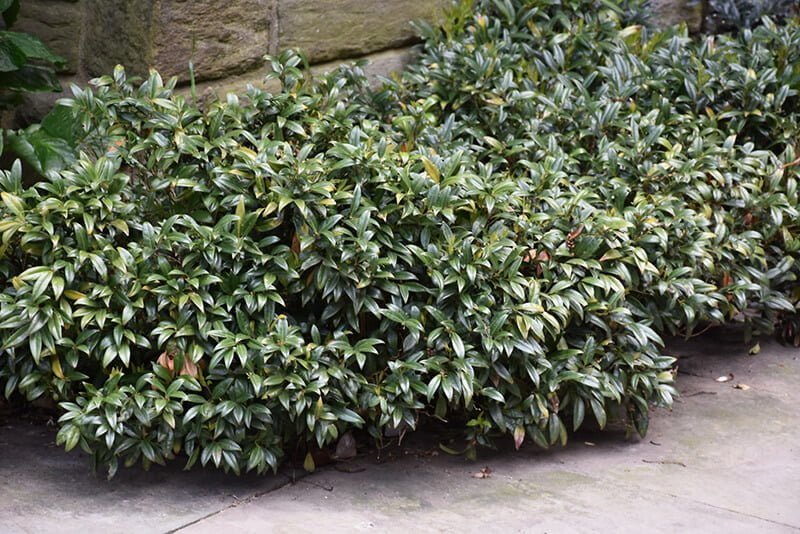

Daphne odora or Winter Daphne
The Winter Daphne is one of the better-known shade-loving plants for Australia. Its fragrant flowers, which bloom in mid-winter to early spring, come in either pink or white. Some gardeners consider growing daphne as tricky, and here is a short guide to taking care of them.
- Soil – A drier area with good drainage
- Watering – Infrequent
- Pruning – Prune lightly as needed; remove long branches at a node
- Feeding – Balanced fertiliser after blooming has ceased


Lamium maculatum or Dead Nettle
The dead nettle is a member of the lavender and sage family. This perennial blooms in the early summer, showing off its purple, pink, red or white flowers, against its silvery leaves. The dead nettle is sometimes used as ground covering.
- Soil – Average, medium moisture; well-drained and humus-rich
- Watering – Average to low maintenance; allow the soil to dry between watering
- Pruning – Prune after the first bloom to encourage fresh foliage; regular deadheading to encourage blooming
- Feeding – Balanced fertiliser monthly during the growth period
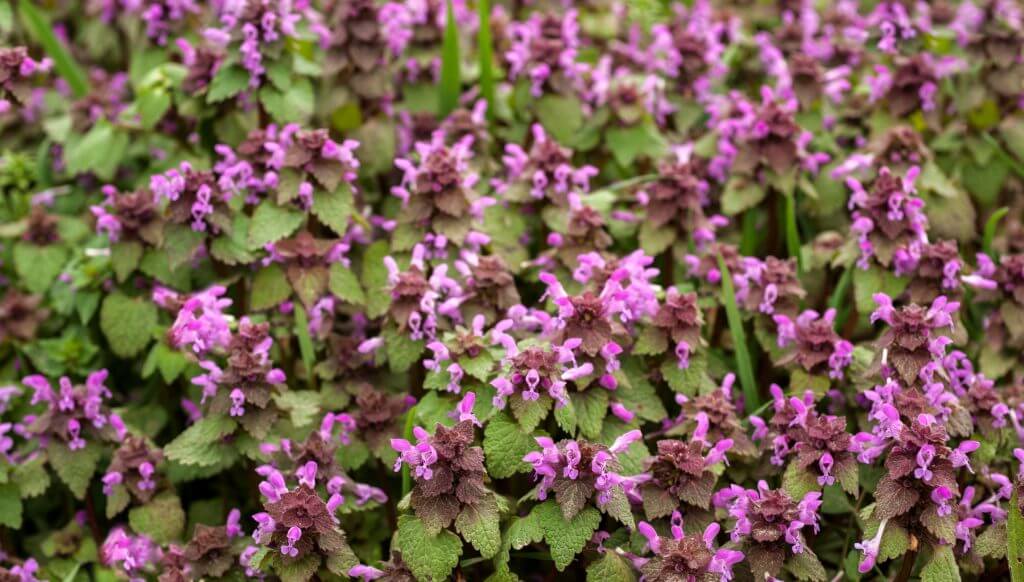

Tiarella cordifolia or Foamflower
The Tiarella corifolia is a perennial that is cold-hardy and blooms in early spring and would be at their healthiest in part or full shade. The foamflower produces small and attractive flowers, with several individual blooms in one stem above the mound of foliage.
- Soil – Moist, cool, humus-rich, well-draining
- Watering – Be careful against excessive water, especially in winter
- Pruning – Low maintenance; remove dead leaves and faded flowers
- Feeding – Do not need a lot of fertiliser
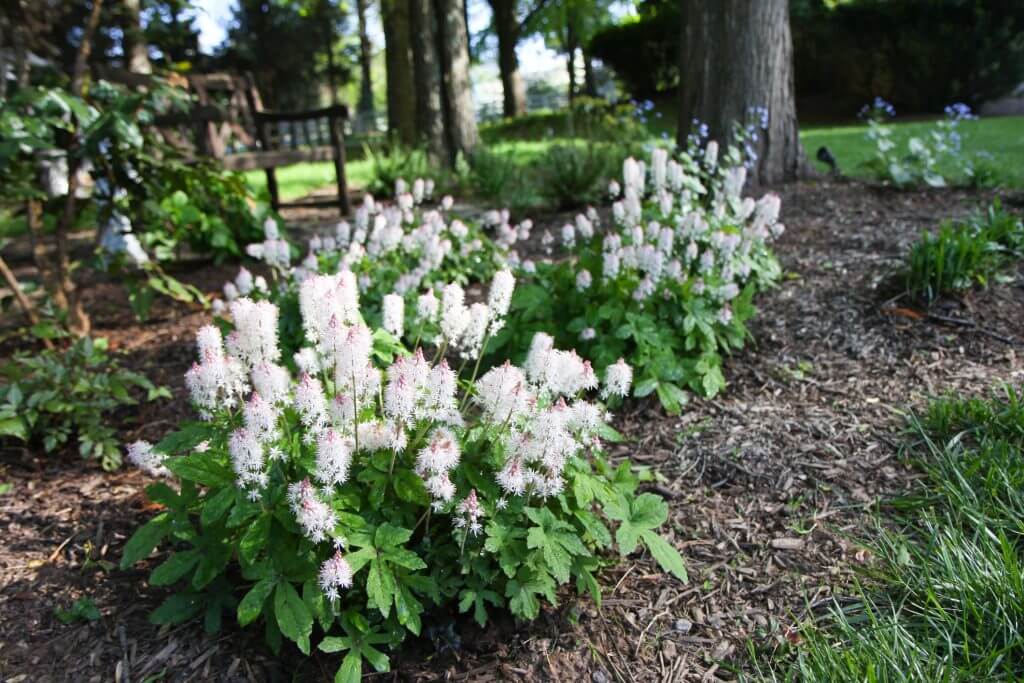

Pulmonaria or Lungwort
The lungwort has long and narrow silvery leaves, with some variations. Some leaves may be spotted, have random splashes of silver, or entirely silver. It blooms in spring, showing off either blue, pink or white flowers, with different colours appearing from the same plant.
- Soil – Moist, organically-rich well-draining; pH 7 to 7.5
- Watering – Only needs watering during the dry season; soak the soil down to 10 to 12 inches when watering
- Pruning – Remove entire dried flower stalk to encourage regrowth; de-leafing may be necessary during extremely hot summers
- Feeding – A little well-balanced all-purpose fertiliser in early spring


Astilbe (Younique Carmine, Rise and Shine)
People who love butterflies would want to have astilbes in their gardens. It is a perennial with colourful flowers, that comes in creamy white, hot pink or pale pink. The colours of its leaves depend on the variety of astilbe.
- Soil – Loamy, well-draining, slightly below average moisture; slightly acidic to neutral
- Watering – Make sure the astilbe is moist, water deeply
- Pruning – Ideal as cutting flowers; remove dead leaves and faded flowers after blooming season
- Feeding – Fertilise in spring with a balanced organic fertiliser
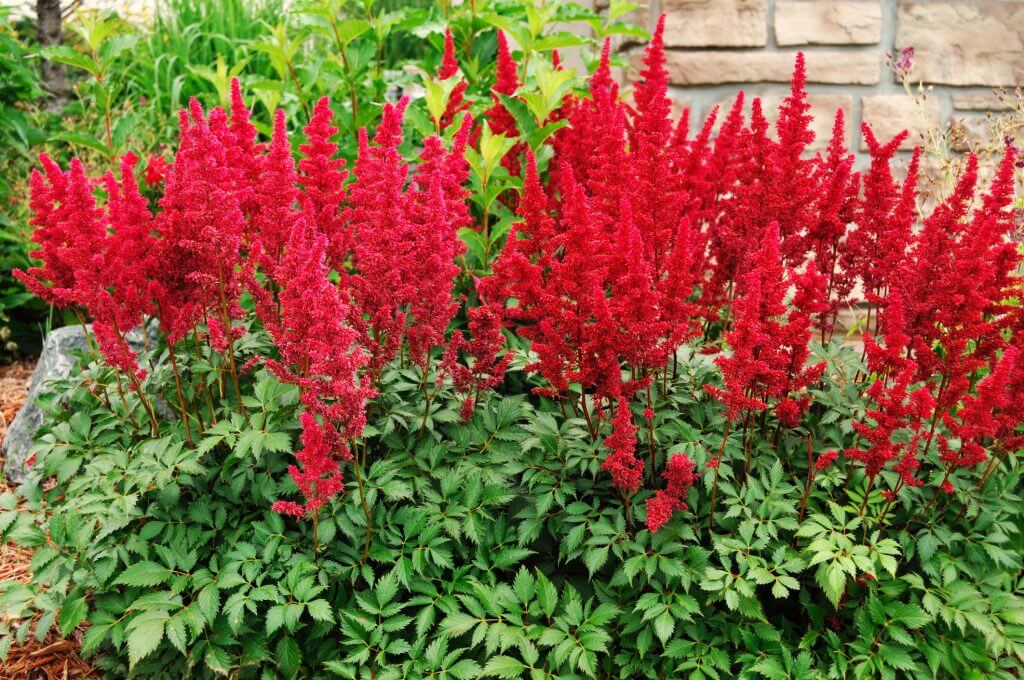

The South African Clivia Miniata or Fire Lily
The fire lily is another good example of shade-loving plants for Australia. This bright-coloured plant is drought tolerant. Different varieties produce different flowers from the more common orange to red, to the fewer yellow, and even the expensive varieties that produce cream or pink.
- Soil – Well-drained, slightly acidic, pH 6.6-7
- Watering – Regular watering—water when the surface becomes dry; stop watering in preparation for the early winter dormancy
- Pruning – None necessary; remove dead leaves and faded flowers
- Feeding – Fertilise with slow-release fertiliser from January to August; do not fertilise in winter
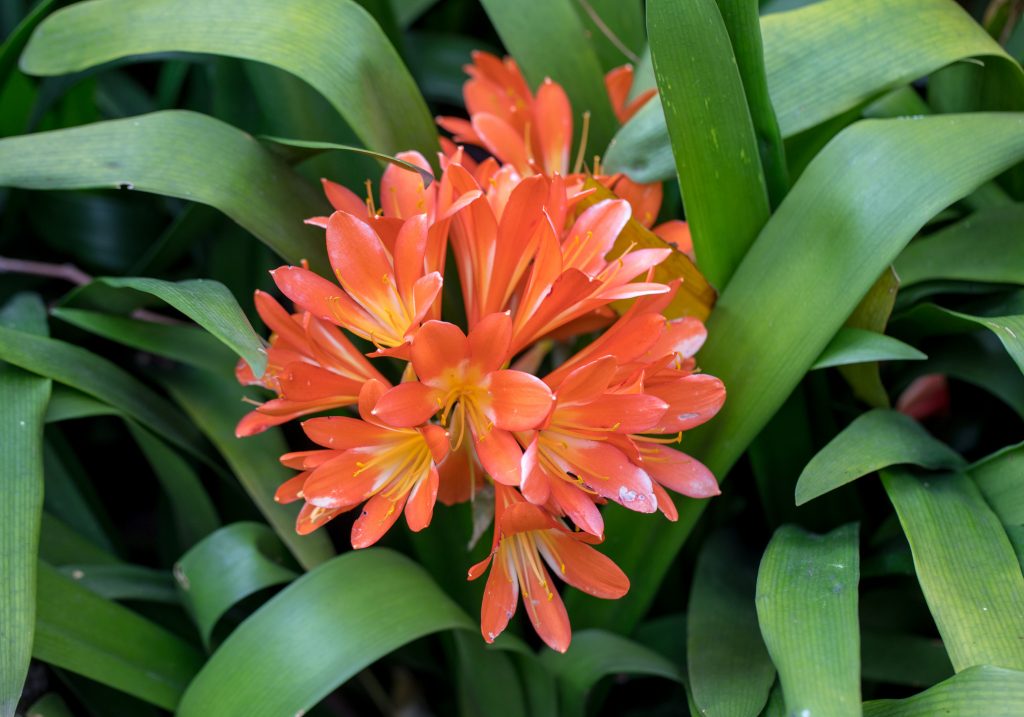

Hydrangea quercifolia or Oakleaf Hydrangea
The Oakleaf Hydrangea is named as such for having leaves that resemble the lobed leaves of an oak tree. In the summer, it produces cream-coloured flowers in spires, while in autumn its foliage adds a gorgeous splash of colour to the garden.
- Soil – Well-draining, rich; slightly acidic, pH 5.5-6.5
- Watering – Moderate; drought tolerant
- Pruning – Trim to fit the space
- Feeding – Balanced fertiliser in early spring and summer
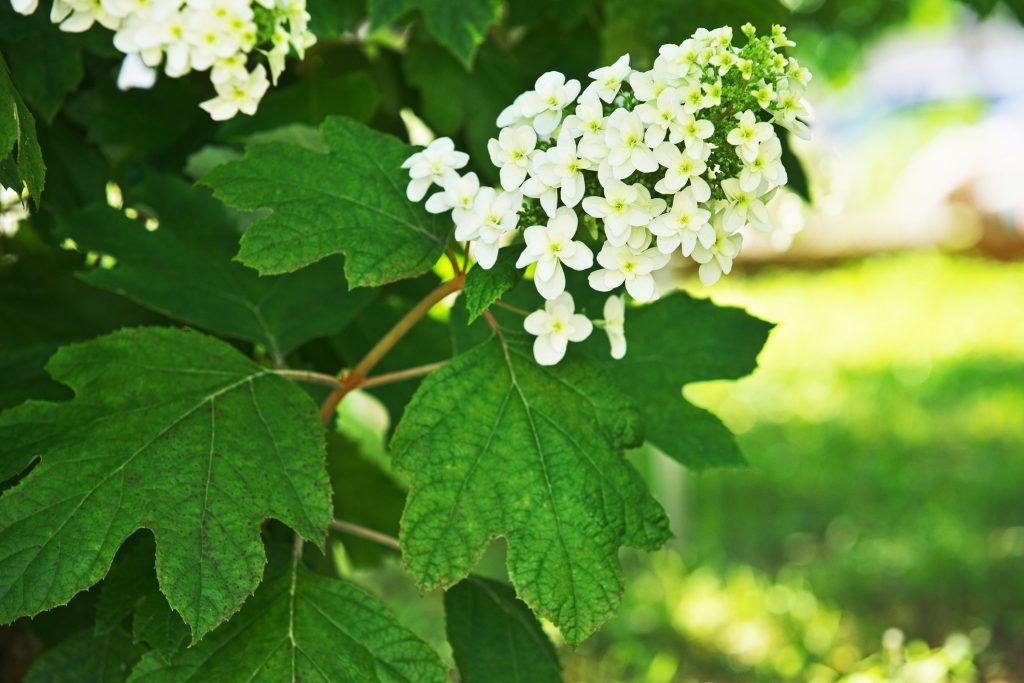

Helleborus orientalis or Winter Roses
Winter roses come in different varieties, and one is never short of choices for colours—from bright whites and yellows to dark plum shades, and others in between like pink, peach, and lilac. It is a gorgeous ground cover for those shady spots in the garden.
- Soil – Humus rich to moderately fertile; avoid sandy soil
- Watering – Water and keep moist during growth; mature plants are drought tolerant
- Pruning – Trim in late winter in preparation for new growth
- Feeding – Annual, with compost or manure
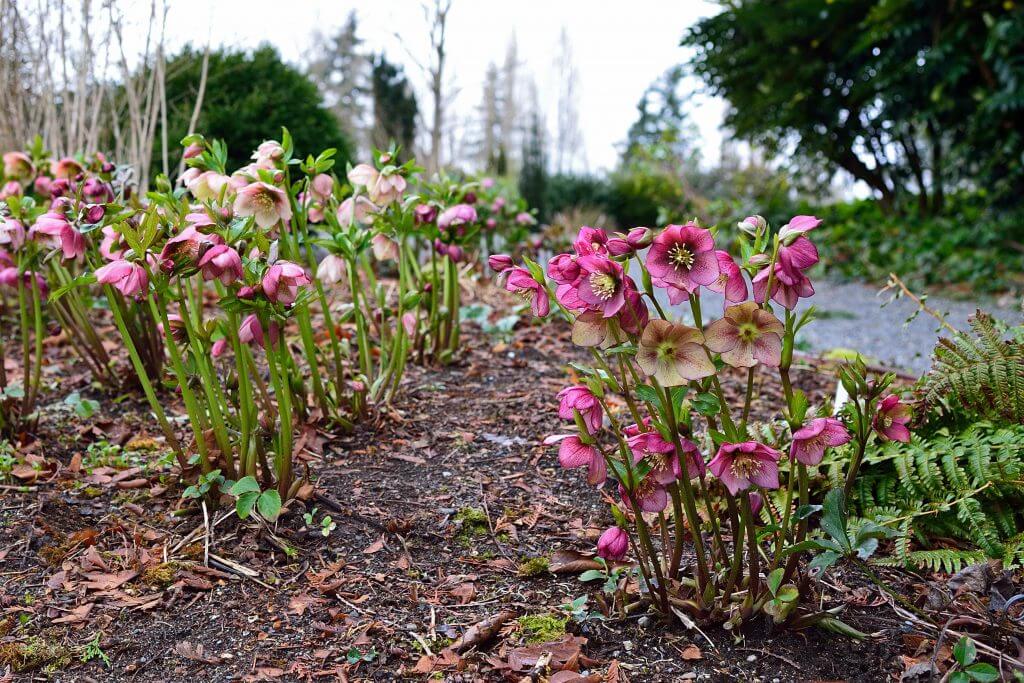

Plectranthus argentatus or Silver Spurflower
The spurflower is an exception to the rule of having darker foliage in the shade. The Plectranthus argentatus, which is native to the Australian forest, has silvery foliage and produces dainty spires of lilac flowers in autumn. It is also hardy enough to withstand frost.
- Soil – Moderately fertile; well-drained: chalk, clay, sand, loam; acidic, neutral or alkaline
- Watering – Water freely in summer; drought-resistant; keep moist in winter
- Pruning – Needs aggressive pruning in late winter; cut damaged growth in early spring
- Feeding – Monthly during active growth; Australian Native fertiliser
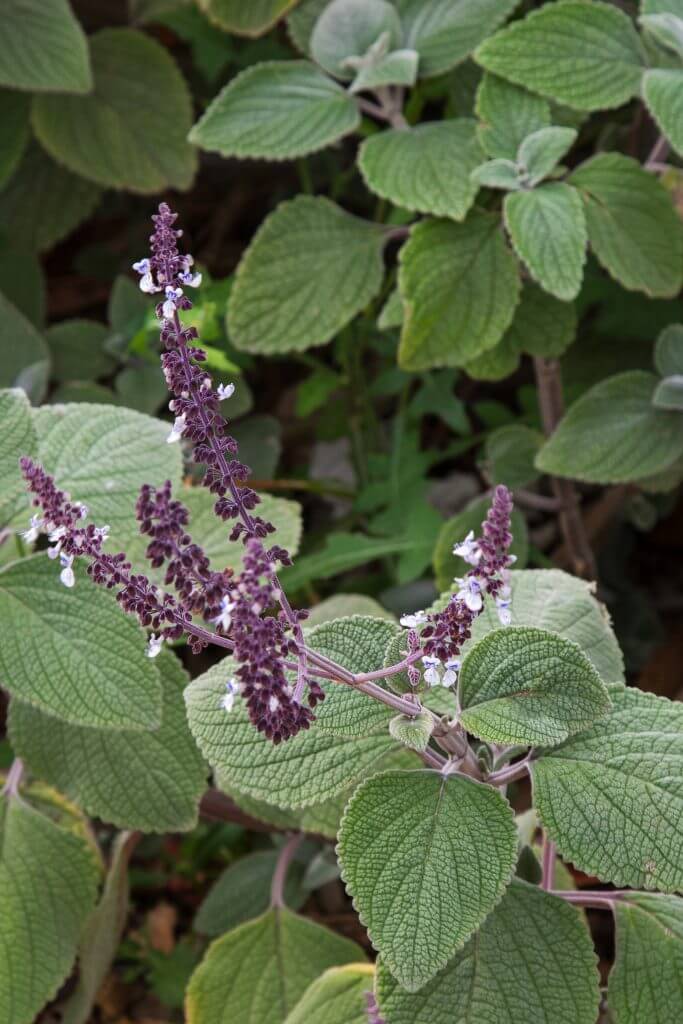

Arthropodium cirratum or New Zealand Rock Lily
The New Zealand rock lily is a hardy evergreen. This New Zealand native is also a good choice for shade-loving plants for Australia. Its foliage is strap-like and gives a bluish hue starting late spring through midsummer. It blooms cream/white star-shaped flowers on its long and airy stems.
- Soil – Well-drained; moist; fertile; tolerates most soil
- Watering – Water during growth period; drought tolerant
- Pruning – Remove bottom leaves twice a year
- Feeding – Fertilise in spring
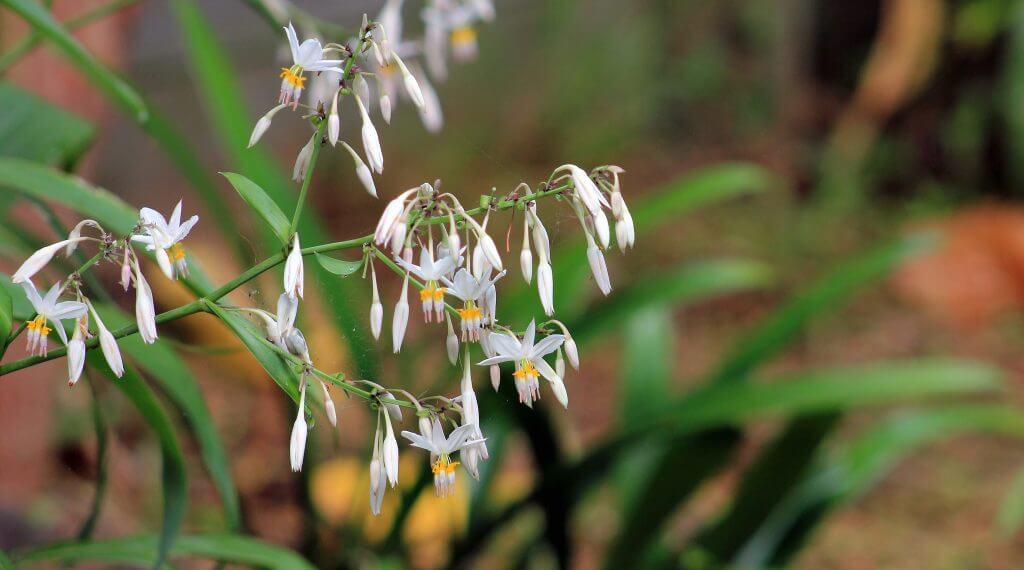

Ophiopogon jaburan ‘Vittatus’ or Giant Mondo Grass, Giant Lilyturf
The Vittatus is a rare, giant and clumping mondo grass with tufts of variegated foliage. The cream to yellow striped ribbon-like leaves provides a wispy and dainty backdrop to its white lilac-tainted flowers. The flowers come out in summer, before the growth of the berries along the blooming scapes.
- Soil – Average; medium moisture; well-drained; slightly acidic to mildly alkaline pH 6.5-7.8
- Watering – Low to average; water deeply twice a week in summer. Water more if it’s excessively hot
- Pruning – Little need for pruning; remove damaged growth
- Feeding – Every three months during the growing season; well-balanced, slow-release fertiliser
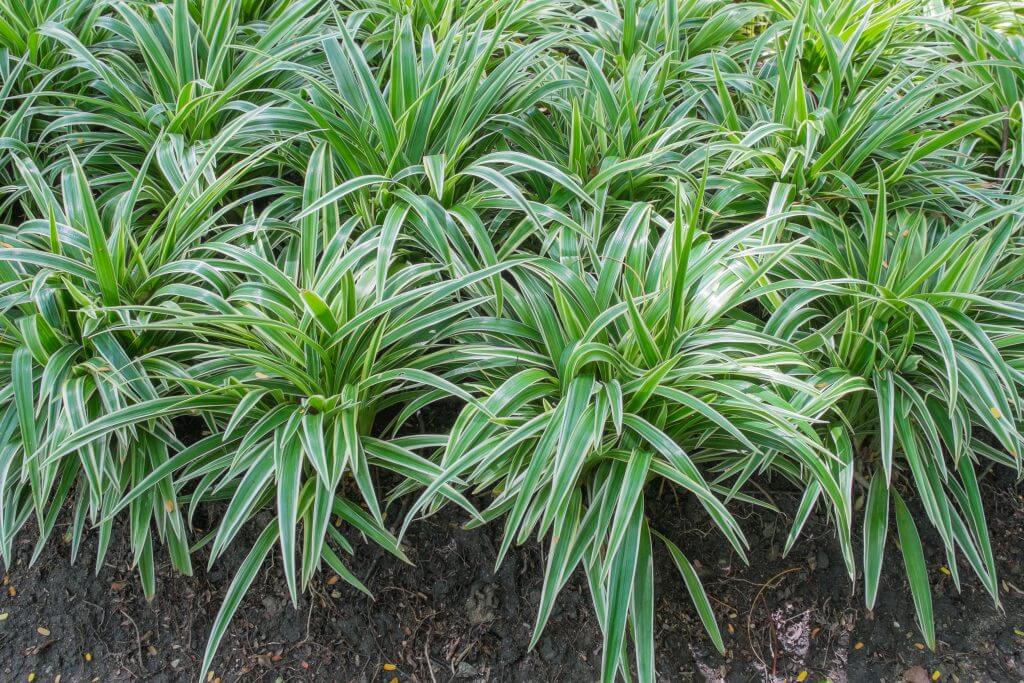

Heuchera or Coral Bells
Coral bells are perennial shrubs that are suitable shade-loving plants for Australia. There are several breeds developed for heuchera, with various leaf colours from silvery to purple-black, chanteuse, orange and salmon, leaving gardeners a wide variety of colours to choose from and add to their landscape.
- Soil – Moist; well-draining; organically rich
- Watering – Occasional; container plants may need more water
- Pruning – Deadhead faded blooms
- Feeding – With compost twice a year
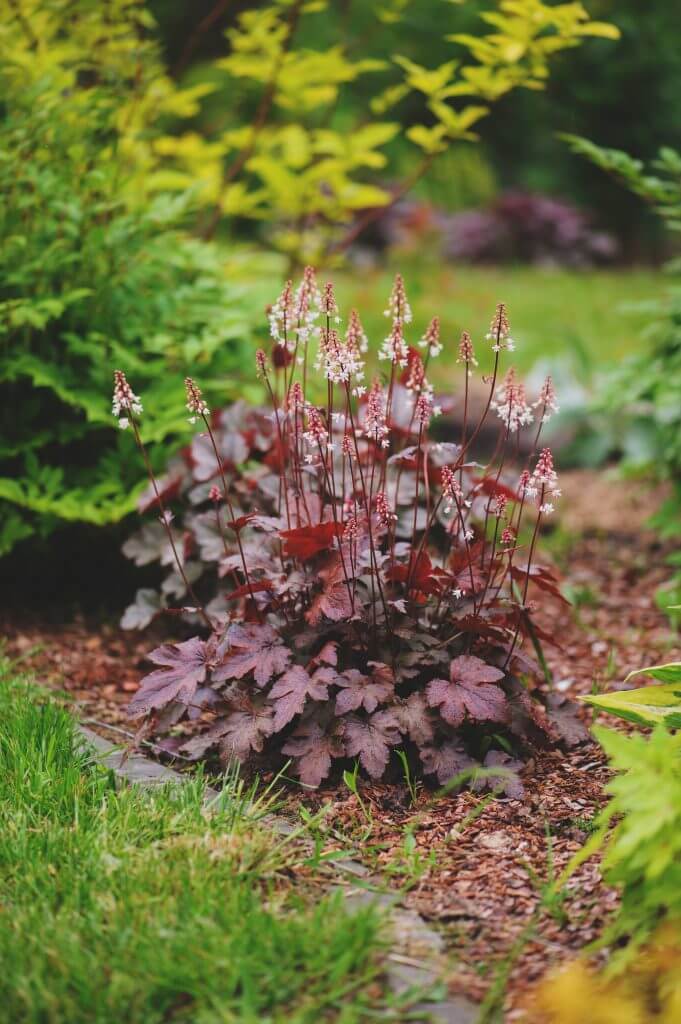

Digitalis or Foxglove
Foxglove flowers come in white, lavender, yellow, red, purple and pink. The tubular blooms come out during the second year, and then after that, they die. However, they do reseed themselves and come back as a different plant. Foxgloves are pretty, but they could be toxic if ingested, so it is best to put this in places where children and pets cannot access.
- Soil – Well-draining; rich; moist but not overly wet
- Watering – Water as needed; don’t allow the soil to get too dry or too soggy
- Pruning – Encourage more blooms from side shoots by removing central spike; Leave the central spikes to mature to develop and disperse seeds.
- Feeding – Little to no fertilisation if planted in rich soil; in early spring, apply 1-inch compost around the plant to encourage growth; avoid excess nitrogen
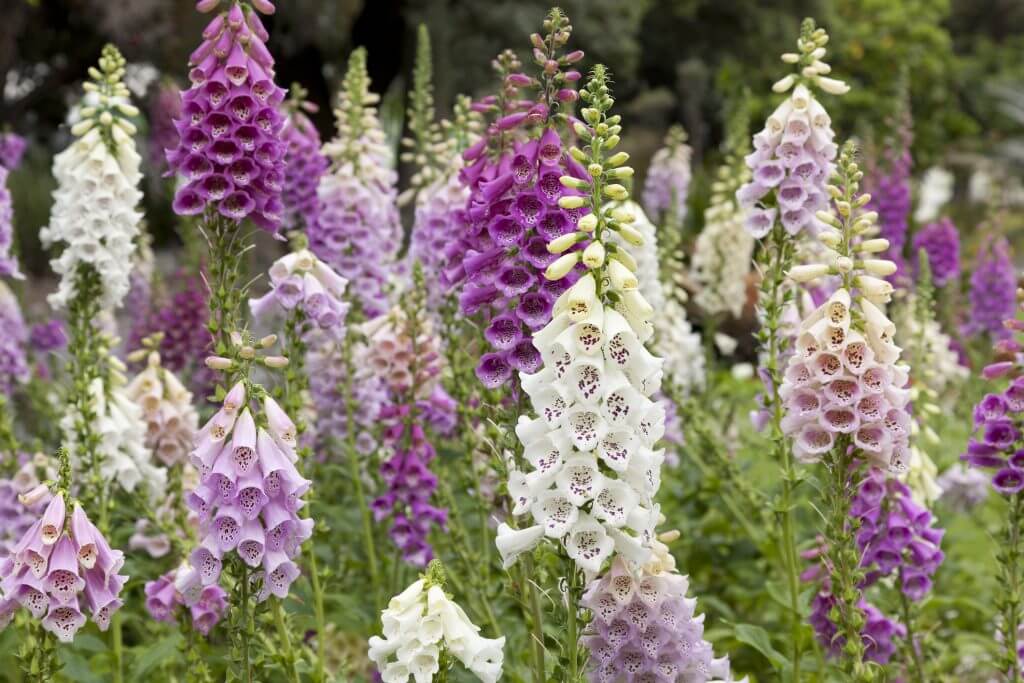

[elementor-template id=”4604″]
[elementor-template id=”6387″]
